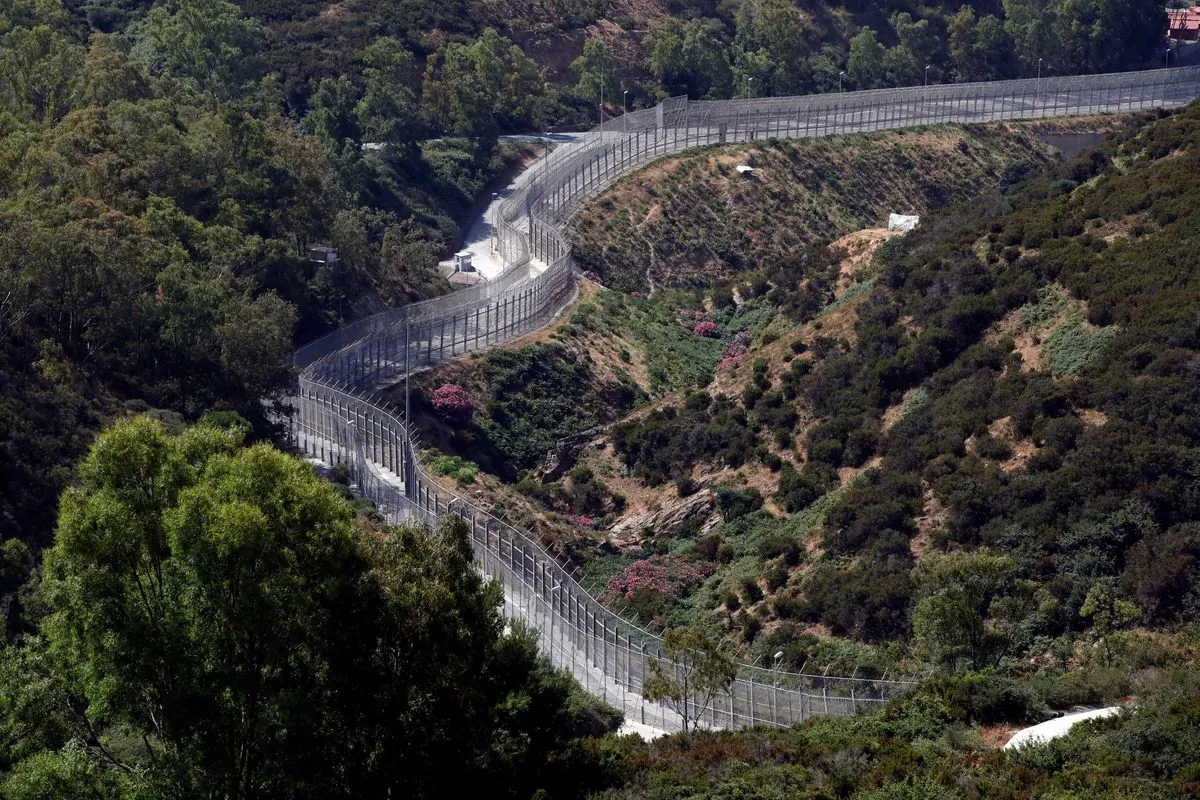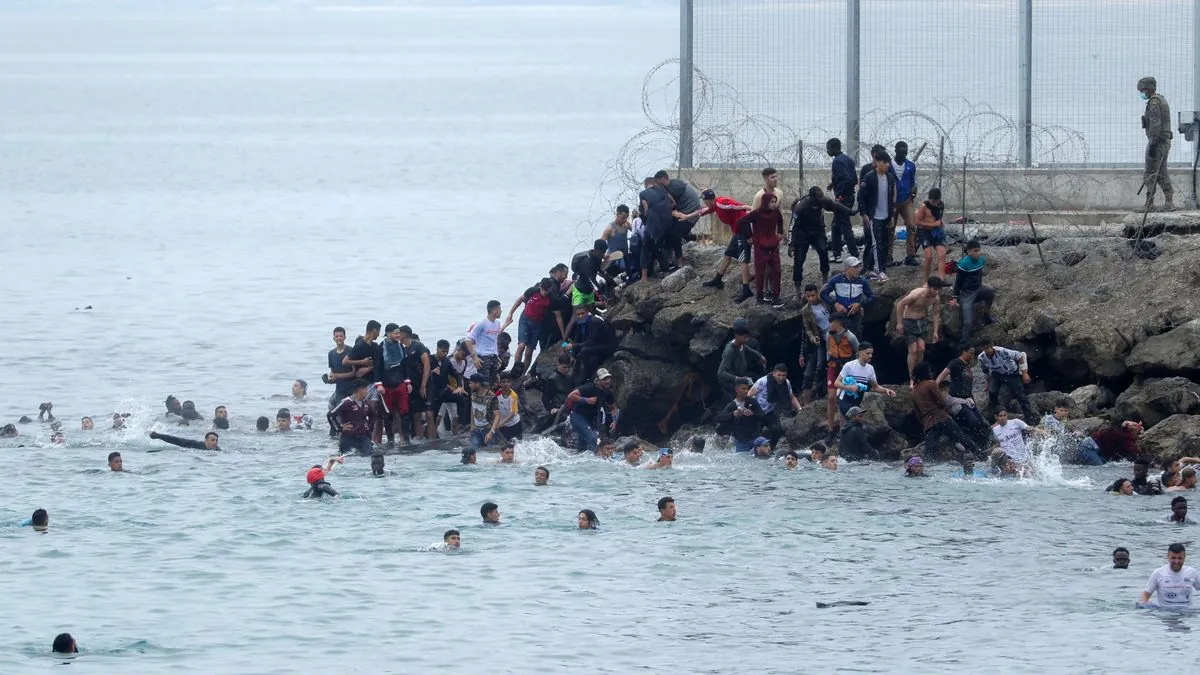Surge in Migration Attempts from Morocco to Spanish Enclave Ceuta
Spanish authorities report thousands of migrants attempting to enter Ceuta from Morocco. The small enclave faces "extreme migratory pressure" as arrivals in 2024 significantly surpass previous year's figures.

Spanish authorities have reported a significant increase in migration attempts from Morocco to the enclave of Ceuta in recent days. The surge, which began on August 22, 2024, has seen an average of 700 daily attempts to breach the border, with a peak of 1,500 attempts on August 25.
Cristina Pérez, the Spanish government's representative in Ceuta, stated that authorities are returning between 150 and 200 individuals to Morocco daily, in accordance with Spanish law allowing for "border rejections." She expressed gratitude for Moroccan authorities' "loyal cooperation" in managing the situation.
Ceuta, a Spanish enclave since 1668, covers an area of just 18.5 square kilometers and has a population of approximately 85,000. Along with Melilla, another Spanish territory in North Africa, Ceuta has long been a target for migrants and refugees seeking entry into Europe. Many attempt to scale the 8.4 km long border fence or reach the enclave by sea.
The geography of these territories places Spain in a position of reliance on Morocco's cooperation for effective border control. This relationship has faced challenges in the past, notably in 2021 when a diplomatic dispute led to a mass influx of migrants, including many unaccompanied Moroccan children, overwhelming Spanish authorities.

Despite improved relations and collaborative efforts to address irregular migration, Ceuta is experiencing increased pressure. From January to mid-August 2024, the enclave recorded 1,622 migrant arrivals, a significant rise from the 620 arrivals during the same period in 2023.
Ceuta's unique status as a Spanish territory in North Africa contributes to its complex migration dynamics. The enclave has been part of the European Union since 1986 and maintains a distinct identity with Spanish and Darija Arabic as official languages. Its economy heavily depends on its port and military base, and it enjoys a special tax status as a free port since 1863.
While the number of migrants reaching Ceuta represents a small fraction of the over 31,000 irregular arrivals to Spain in 2024, the enclave's limited size and resources place it under what Pérez describes as "extreme migratory pressure."
The situation in Ceuta highlights the ongoing challenges of managing migration in the Mediterranean region, balancing humanitarian concerns with border security, and maintaining diplomatic relations between neighboring countries with complex historical ties.
"Since August 22, an average of 700 people had attempted to breach the border daily, with a peak of 1,500 attempts on Sunday."
As Ceuta continues to grapple with these challenges, its unique position as a cultural crossroads, reflected in its diverse religious makeup and historical landmarks like the Royal Walls dating back to the 16th century, remains a testament to its enduring significance in the region.


































